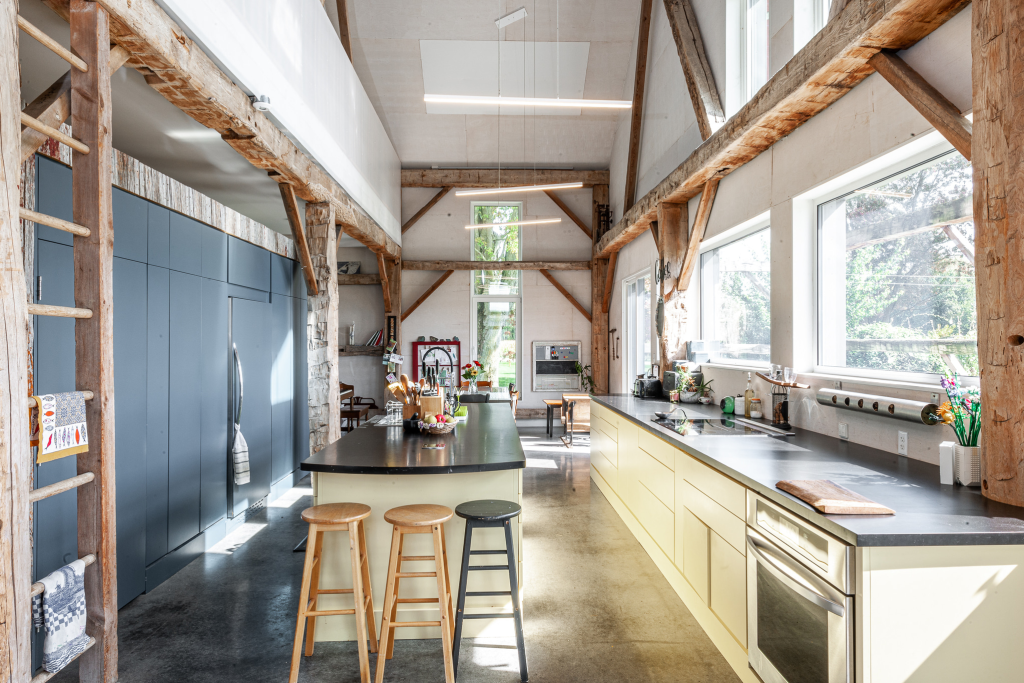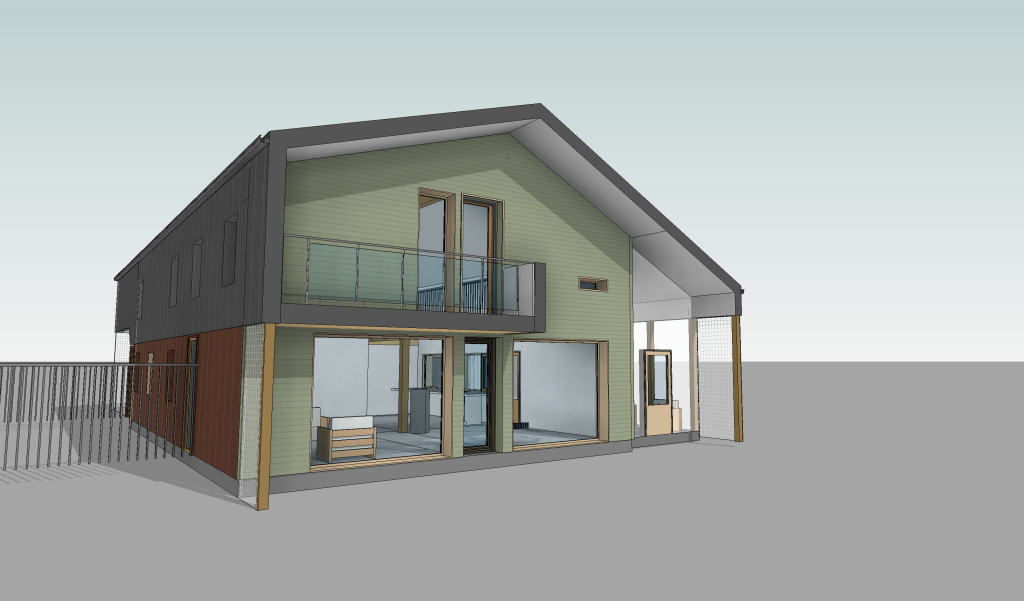The number one question our office receives is how much this costs.
Unfortunately, the answer is “it depends.”
We will explain what it depends on below and hopefully guide you on custom home costs and the extra costs associated with high-performance homes, like passive and pretty good houses. As well as what to watch out for and general principles for home costs.

What is the value of good design for a bright space like this?!
First, I want to explain the difference between project costs and construction costs.
Construction Costs
Are the cost of materials and labour, the studs, drywall, paint and the labour to install these. Generally, when a contractor gives you a square foot price, he is quoting the construction costs, and it only extends to 1 metre beyond the house's walls. So, driveways, landscape, septic, and utilities are all not included in this number.
Soft costs
To complete a project, there are several other things that are required besides the actual construction costs. These include HST (which is usually added to the budget right away), permits, engineering, and contractor mark-ups. We also typically include site works and utilities in this category. Additionally, we always carry at least a 10% contingency to account for any changes, unforeseen conditions, errors, and the general imperfections of construction. Soft costs, which can range from 50-100% of the construction cost, also include HST at 13%.
Project Cost = Construction Costs + Soft Costs
It is imperative that you budget the whole project's costs in order to avoid disappointment or failure.

Now, let's talk about construction costs.
Usually, we start with a cost per square foot. This can range anywhere from $300-1000 per square foot. $300 is the DIYer, $450 is the average, and $600+ is luxury. These very high-level numbers have a lot of assumptions in them, so be careful. As you progress through decisions and the project design, this number will get more and more precise. These are some of the main things that costs depend on.
1. Size, Area, and Shape
- Take your budget range and multiply it by the area (not including basements); that is your approximate construction costs (NOT overall project costs, remember).
- More square footage = more costs. This is the number one factor in adjusting costs from the beginning. And it’s the one that makes the most substantial difference.
- But the form and shape of the building also affect this.
- An all-story home will be more costly than a 2-story building as there are more roofs and walls per floor area.
- A basement is a cost-effective way to add area, but it isn’t always the best quality of space. We have a separate article on this.
- Also, a house with many corners, dormers, and perimeter will cost more than a compact box.
2. Do-It-Yourself
- Painting the walls, designing, or managing the project alone might sound fun and easy and a good way to save money. These tasks might save you 2-6% on the project costs, but not substantial amounts. Before you choose this option, consider the costs to your time and mental health and understand its impact on your current and future commitments.
- Do-it-yourself requires making a lot of decisions.
- Construction is very stressful, and this is likely one of the biggest investments of your life. Do it right. (Stay tuned for a future article dedicated this consideration)
3. Finishes
- Your choice of finish materials greatly affects the budget. You can buy floor tiles that cost $1.00 or $100.00 each. A sink faucet can cost anywhere from $50 to $1000. So your finish choices have a big effect on the project.
- Research or ask for recommendations on what finishes you should invest in
4. Site works
- I am going to mention it again here, but remember it is outside of the definition of “construction costs,” but many of our clients are rural, and rural costs more money for site and service works.
- You will need a septic system ranging from $5,000 to $25,000. Your utilities need to come further. You may need a well or a new driveway. These can add substantial costs to the project.

Notice the big gray box; that’s the operating costs of a building over its life. See the tiny sliver of green on the right; that’s the construction costs.
5. Operating costs & high-performance premium
- Don’t forget to consider operating costs over the long term.
- It’s a balance between initial capital investment and long-term operating costs.
- High-performance homes can cost anywhere from 3019% more than a traditional home. But put in the context of the life of the building over 50-100 years, the initial costs of a building are only around 10%, and the operating and maintenance costs are over 75%. So, if you can do it well the first time, do it. It will pay for itself.
VELD architect has high-performance, low-energy building expertise and can bring that cost-effective expertise to your custom home.


Insulation on the outside and the inside does add costs to this passive house. But at R60 walls and a high-efficiency heat exchanger,
it's nice and toasty in the winter and costs less!
So, what if your project budget and the estimated project costs don’t align?
You have a few options;
- Consider phasing the work; overall, it will cost more in the long term, but if capital costs are the limit, you need to work within it. Garages or finished basements are easy ones to phase.
- Reduce Square footage – This is the biggest factor you must adjust at this early stage. Consider if you really NEED the bigger bedrooms. Try to make spaces multi-purpose, IE, a fitness space could also be an office or a rec room.
Lastly, I will highlight the cost of an experienced designer is only around 1% of the cost of the life of the building, but it has the largest effect on the rest of the costs.
Think carefully about that 1%!
So, with all these “it depends” – how much does it cost to build a house… you will have to determine where you fit on the budget scale. I can’t say it enough times… make sure you evaluate the whole project costs.